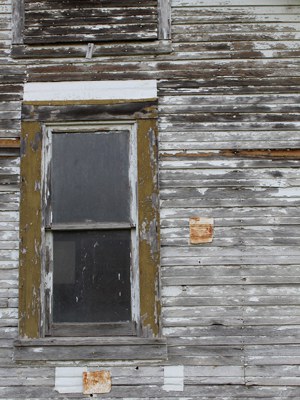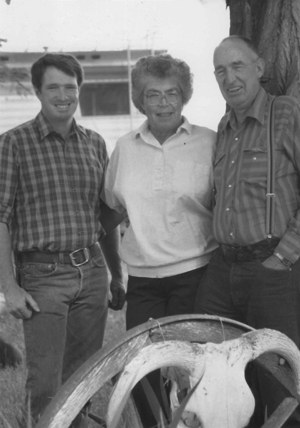In honor of historic preservation month, the Land Trust wanted to share some of the cultural history of our newest project, Priday Ranch. The Land Trust protected the 4,500 acre Priday Ranch in 2020. Located north of Madras, Oregon, Priday Ranch conserves ten miles of Trout Creek, Antelope Creek, and Ward Creek, rugged canyons, native grasslands, and home to numerous wildlife species.
Historically, Native Americans from different groups moved through the area north and east of what is now Madras and Priday Ranch hunting, fishing and gathering. The Warm Springs tribes held the lands between the Cascades and the Blue Mountains. To the north were the Nez Perce, the Cayuse, and the Umatilla. Further south were the Klamath, the Modoc, and the Shasta. The Paiutes (also known as the Shoshone or the Snake) occupied the rest of Eastern Oregon. Priday Ranch is within the lands ceded to the United States in the Treaty with the Tribes of Middle Oregon in 1855. Today, the Confederated Tribes of Warm Springs, by virtue of the Treaty of 1855, have legal rights to harvest and manage wildlife and are important partners in the management of Priday Ranch.
The first Euro-Americans began to arrive in Central Oregon in the 1800s as trappers, explorers, and survey crews began mapping the region. Central and Eastern Oregon also offered grasslands for both sheep and cattle. One of the first ranches near what is now Priday Ranch, was at Hay Creek. Hay Creek was started by a Dr. David Baldwin in 1873 and developed into a major sheep producing ranch. The ranch was famous worldwide for the quality of the wool produced by its Merino sheep. Sheep were big business in this part of Central Oregon, in fact the town Shaniko was once known as the wool capitol of the world!
What was the area like back then? “… the grass grew very high and rank. Hay could be cut almost anywhere in the Blue Mountains. Wild timothy and pea vine grew eighteen inches high. Bunch grass would make a ton of hay per acre. There were only a few settlers in the country and practically all of them were engaged in hunting. The game was very plentiful and the skins and dried meat were sold in The Dalles. The game chiefly hunted was deer, elk, and bear.” In these early years “the surrounding country was filled with homesteaders who worked at Hay Creek to feed themselves and their families while proving up on their own land claims …” (Many Hands. Jefferson County Reminiscences, 1957).
The year was 1879. Albert James Priday had left Glouchestershire, England arriving in Central Oregon by 1880. Albert’s wife, Mary Dipper, and their six children joined him shortly thereafter taking the newly completed train from Portland to The Dalles and then traveling by freight wagon the rest of the way. The family settled in the area east of Madras and after several moves settled on Trout Creek. Albert began acquiring land, and together with his son Leslie Priday, would eventually build up a 70,000 acre ranch on the former Teal and Coleman spread. (Cattle Barons of Early Oregon 1978:42)
Some decades later Samuel Augustus Ovens, a painter originally from Georgia who followed his trade in New Jersey as well as Illinois, eventually moved west to Oregon, settling in Cross Keys (what is now Willowdale) by 1920. His purchase of land was a part of a second era of heavy settlement in northwestern Jefferson County, most of it between 1910 and 1925. During that era, practically every foot of government rangelands were filed on by people hoping to develop homesteads.
Here, as elsewhere, families increased holdings through marriage, and the Priday and Ovens families were no exception. Albert James Priday’s youngest son, John Harrison, married Samuel Augustus Ovens’ daughter, Helen, in 1915. Samuel had a homestead near Haycreek Ranch as did Helen. Helen continued to acquire land, first a 40-acre plot then a full 640 acres and later acquiring a homestead on Trout Creek. And the Priday ranch continued to grow and grow and grow.
“There were many good years when the homesteaders prospered but in 1929 there was a drop in prices followed by severe drought. In the early 30s the land became dry and barren, the only grass was badly overgrazed, and on much of the land, only lupine and the green sage remained. When crops were planted the seed didn’t even sprout except on the sub-irrigated land where a little grain, hay and grass were grown. This [drought] lasted five or six years. During this period, most of the remaining homesteaders sold their land and moved away.” (Jefferson County Reminiscences, 1957:8) To the west of Madras, the same fate befell those homesteading in what we now know as the Crooked River National Grasslands.
Albert James Priday died in October 13, 1901 and Mary Dipper Priday died December 1, 1920. Both were buried in the cemetery in Antelope OR. The Priday family continued to run Priday Ranch until 2020 when Albert James Priday’s great-grandson, Annan Priday, worked with the Land Trust to conserve Priday Ranch forever.
Learn More:
- About Priday Ranch
- About Native American stewards of the land
- About the history of Central Oregon and the Santiam Wagon Road


